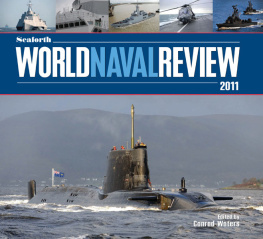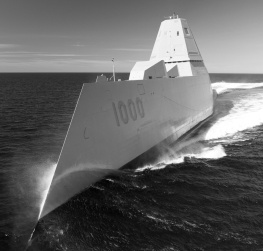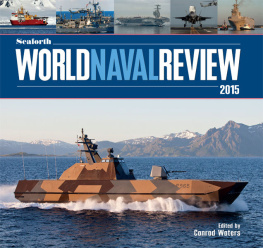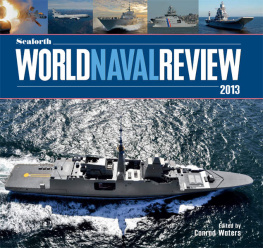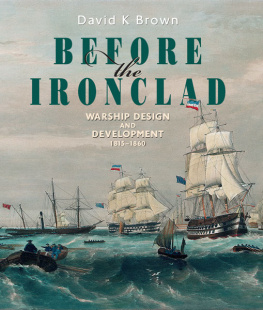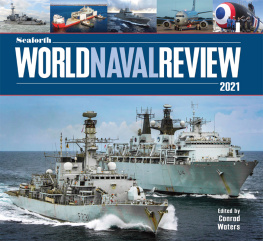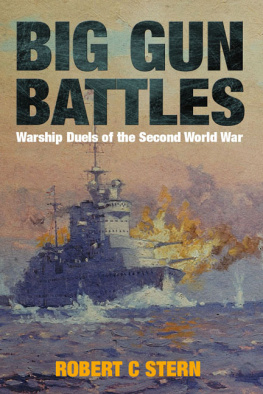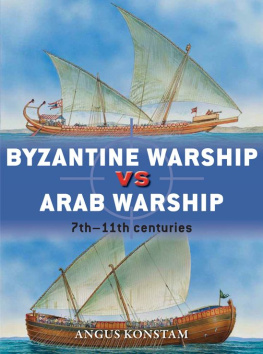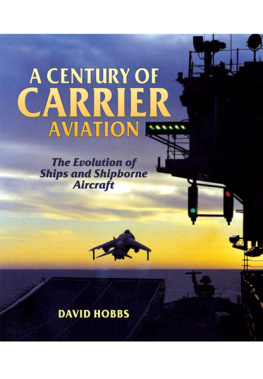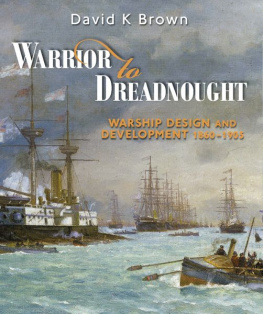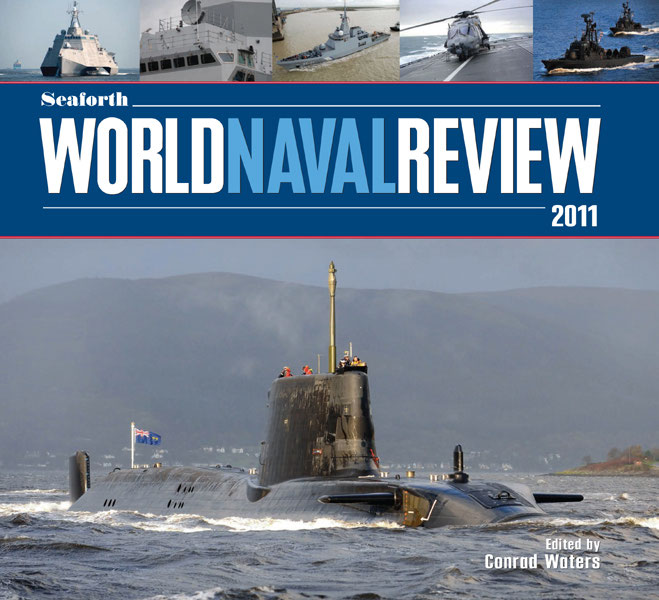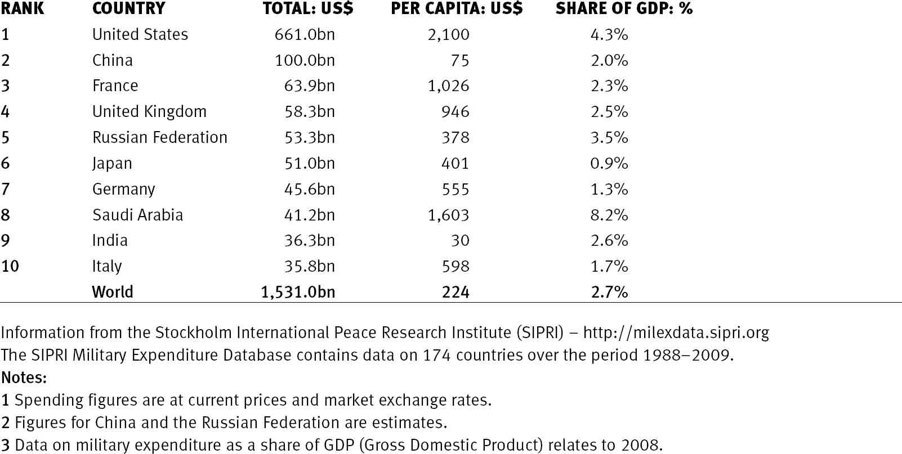Frontispiece: The US Navys new Klingon Imperial Cruiser,
the littoral combat ship Independence (LCS-2), pictured on
sea trials in July 2009. Her hull - based on that used for the
commercial high-speed trimaran Benchijigua Express
provides both speed and stability. (US Navy)
The editor welcomes correspondence and suggestions from readers.
Please contact him via Seaforth at info@seaforthpublishing.com.
All correspondence should be marked FAO: Conrad Waters.
Copyright Seaforth Publishing 2010
Plans John Jordan 2010
First published in Great Britain in 2010 by
Seaforth Publishing
An imprint of Pen & Sword Books Ltd.
47 Church Street, Barnsley
S Yorkshire S70 2AS
www.seaforthpublishing.com
Email info@seaforthpublishing.com
British Library Cataloguing in Publication Data
A CIP data record for this book is available from the British Library
ISBN: 978-1-84832-075-8
PDF ISBN: 978-1-78346-631-3
EPUB ISBN: 978-1-78383-097-8
PRC ISBN: 978-1-78346-864-5
All rights reserved. No part of this publication may be reproduced or transmitted in any form or by any
means, electronic or mechanical, including photocopying, recording, or any information storage and retrieval
system, without prior permission in writing of both the copyright owner and the above publisher.
The right of Conrad Waters to be identified as the author of this work has been asserted in accordance with
the Copyright, Designs and Patents Act 1988
Typeset and designed by Stephen Dent
Printed and bound in China through Printworks International Ltd.
CONTENTS
| Section 1: Overview |
| 1.0 | Introduction |
| Section 2: World Fleet Reviews |
| 2.1 | Regional Review North and South America |
| 2-2 | Regional Review Asia and The Pacific |
| 2-3 | Regional Review The Indian Ocean and Africa |
| 2-3A | Fleet Review The South African Navy |
| Leon Engelbrecht looks at the development of South Africas Navy in the post-apartheid era. |
| 2.4 | Regional Review Europe and Russia |
| 2.4A | Fleet Review The Turkish Navy |
| Devrim Yaylali describes how Turkeys fleet expansion has boosted the local industrial base. |
| Section 3: Significant Ships |
| 3.1 | Astute Class Submarines: A Quantum Leap in Capability for the Silent Service |
| Richard Beedall describes the new Royal Navy nuclear-powered attack submarines. |
| 3.2 | Delhi Class Destroyers: An Overview of Indias Project 15, Project 15A and Project 15B Series |
| Mrityunjoy Mazumdar provides an overview of Indias indigenous destroyer programmes. |
| 3.3 | Fridtjof Nansen Class Frigates: Norways Ticket to the Aegis Club |
| The editor reviews an impressive example of international collaboration. |
| 3.4 | USS Independence (LCS-2) Class Littoral Combat Ship: The Wow! Factor |
| Scott Truver assesses the US Navys new Klingon Imperial Cruiser. |
| Section 4: Technological Reviews |
| 4.1 | Naval Multifunction Radars: an Overview of their Development |
| Norman Friedman describes a technology that has had a vast impact on modern warship design. |
| 4.2 | World Naval Aviation: An Overview of Recent Developments |
| David Hobbs provides a wide-ranging overview of recent developments in maritime air power. |
| 4.3 | UK Warship Support: Last Type 42 Destroyer Refit Completed Against a Background of Change |
| The editor places HMS Edinburghs refit in the context of a changed approach to warship maintenance. |
| Contributors |
Note on Tables: Tables are provided to give a broad indication of fleet sizes and other key information but should be regarded only as a general guide. For example, many published sources differ significantly on the principal particulars of ships, whilst even governmental information can be subject to contradiction. In general terms, the data contained in these tables is based on official information updated as of June 2010, supplemented by reference to a wide range of secondary and corporate sources, such as shipbuilder websites.
INTRODUCTION
If a man does not know to what port he is sailing, no wind is favourable, wrote the Roman philoso-pher Seneca the Younger, one-time tutor to the Emperor Nero, in the first century AD. This opening quotation to the 2011 edition of the Seaforth World Naval Review is particularly relevant to the leading Western navies as they grapple with increasing budgetary pressures in the aftermath of the global credit crunch. Both the United States Navy (USN) and British Royal Navy, in particular, face an era of potentially severe austerity as their respective governments face up to the imperative of tackling crippling budget deficits. The way that their leaders and, more importantly, their political masters respond to this challenge could have a significant impact on the de facto Anglo-Saxon command of the seas that has been a key force in shaping global history over the past 200-odd years.
Of the two fleets, the USN seems at first glance to be more advanced in reshaping its priorities to revised financial realities. The 2010 Quadrennial Defense Review released on 1 February 2010 suggested a largely unchanged naval force structure up until 2015 against an overall re-emphasising of efforts towards winning current wars and being better able to deal with asymmetric threats. Decisions have been taken to cap or cancel construction of high-technology but hugely expensive surface combatants such as the DDG-1000 destroyer and follow-on CG(X) cruiser in favour of extended production of proven and cheaper designs, thereby making the future shipbuilding programme more affordable. Whilst this approach suggests progress has been made towards the goal of maintaining fleet numbers at a time when funding is tight, it may well prove inadequate in the medium term. As shown by Table 1.0.1, US military expenditure still remains far in excess of all other nations under most measurements. This situation seems unsustainable given the stretched state of US finances. Indeed, in a speech at the Navy League Sea-Air-Space Exposition at New Harbour, Maryland, on 3 May 2010, US Defense Secretary Robert Gates questioned the current emphasis on carrier strike groups and high-end amphibious capabilities in an era of increasingly finite resources. It therefore seems that more fundamental changes in USN posture might emerge over the next few years. These are likely to include increased reliance on inter-service co-operation through ideas such as the USAF/USN Air-Sea Battle concept, as well as a further rebalancing of forces towards more cost-effective vessels better able to operate in the littoral.
Table 1.0.1: COUNTRIES WITH HIGH NATIONAL DEFENCE EXPENDITURES 2009

